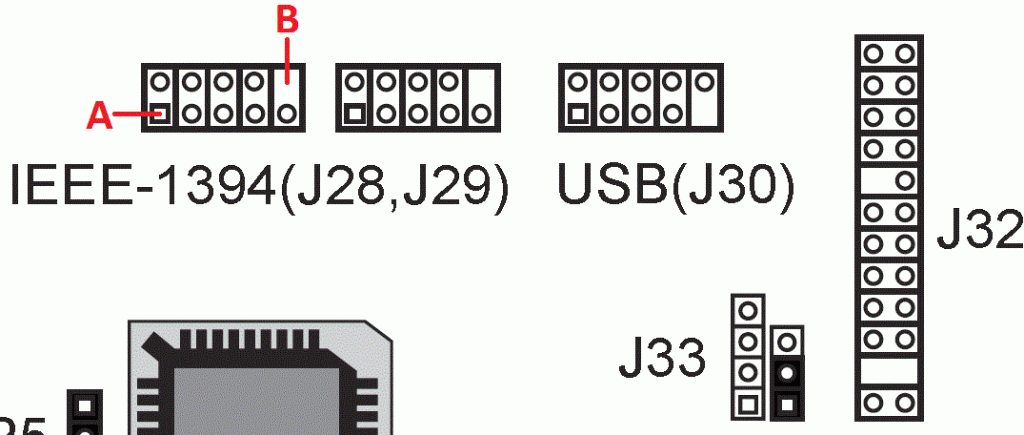I need to connect IEEE-1394 6-pin cable to a pin group J28. Does anybody know how pin numbers are determined in this layout:

- Is a pin marked with A the pin #1? Or, is the pin marked with B the pin #1?
- Which are pins 2, 3, 4, 5 and 6? Is it that count grows by rows? Or, does count grows by columns?
Thanks in advance. Google just gives me a lots of answers how to connect HD disks and CD-ROMs, which is not my case.